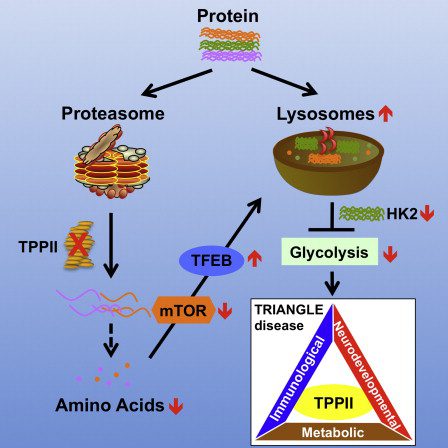New anti-entropic microbes
Because gut bacteria live without oxygen, they need electron transfer to survive. Metabolizing amino acids allows transfer of electrons, but produces large amounts of byproducts, including phenylacetic and phenylpropionic acids. These products, unlike RiPPs are able to go into the cells and the blood stream. There are many different metabolites, only some of which are understood. Many metabolites of these are made in large quantities.
Much of what occurs in physiology is based on signaling (see previous post on The Language of Cells.) The signaling comes from our cells and cancer cells, but, also, a large amount from microbes.
Somehow, our identity as a person is tied to our body, which is in fact a vast symbiotic community. As mind affects our body, it must, also influence this large amount of microbes, who have major effects in every aspect of human physiology.
My comment: The metabolism of nutrients links nutrient-dependent microRNAs to the creation of adhesion proteins that vary with the physiology of reproduction, which enables fixation of RNA-mediated amino acid substitutions in the organized genomes of all living genera. The adhesion proteins have been described as the glue that holds the cell together.
My comment: The glue is required to link the anti-entropic effect of nutrients to organization of genomes in the context of an atoms to ecosystems model.
See also: Nutrient-dependent pheromone-controlled ecological adaptations: from atoms to ecosystems
Abstract excerpt:
This atoms to ecosystems model of ecological adaptations links nutrient-dependent epigenetic effects on base pairs and amino acid substitutions to pheromone-controlled changes in the microRNA / messenger RNA balance and chromosomal rearrangements. The nutrient-dependent pheromone-controlled changes are required for the thermodynamic regulation of intracellular signaling, which enables biophysically constrained nutrient-dependent protein folding; experience-dependent receptor-mediated behaviors, and organism-level thermoregulation in ever-changing ecological niches and social niches.
My comment: Some evolutionary theorists still attribute the development of interactive symbiotic communities of cell types, individuals, and species to the anti-entropic effects of natural selection. They ignore what is known about microRNAs and the adhesion proteins.
The links from bacteria to the adhesion proteins are new discoveries, but ignoring the laws of physics that link the nutrient-dependent chemistry of life to the molecular mechanisms of cell type differentiation took on new meaning with publication of:
The second law of thermodynamics is the first law of psychology: evolutionary developmental psychology and the theory of tandem, coordinated inheritances: comment on Lickliter and Honeycutt (2003)
Abstract excerpt:
Selection built anti-entropic mechanisms into organisms to orchestrate transactions with environments so that they have some chance of being organization-building and reproduction-enhancing rather than disordering.
Journal article excerpt: “…it is natural selection that chooses some genes rather than others and in so doing orchestrates the interaction between the two inheritances so that high degrees of recurrent functional order can emerge and persist, such as eyes or maternal love.
My comment: Claims that natural selection is the anti-entropic link to the emergence of eyes and maternal love can be compared to the claims of serious scientists.
Serious scientists attribute symbiosis to what is known about nutrient-dependent metabolism. That requires a link between sensing and secreting in the context of metabolic networks linked to genetic networks via the conserved molecular mechanisms of RNA-mediated cell type differentiation in all living genera.
See: Secreting and Sensing the Same Molecule Allows Cells to Achieve Versatile Social Behaviors
Journal article excerpt:
Evolution appears to favor efficient circuits and signaling elements that can accomplish many different tasks (13, 14). The diverse social behaviors that are enabled by the functional flexibility of the secrete-and-sense circuits (Fig. 5C) may explain the frequent occurrence of this class of circuits in nature.
Excerpt from my comment (posted to the Science Magazine site):
The conserved molecular mechanisms appear to represent adaptations to ecological variation via nutrient-dependent secretion of pheromones and the sensing of pheromones.
That links the epigenetic landscape to the physical landscape of DNA in the organized genomes of species from microbes to man.
The fact that ecological adaptations occur via a nutrient-dependent signaling pathway, which regulates a pheromone-controlled signalling pathway shows how unicellular and multicellular organisms produce a coordinated response to multiple stimuli with no consideration for mutations or for natural selection of anything except food.
My comment: In the context of what is known to serious scientists about the biophysically constrained nutrient-dependent RNA-mediated chemistry of protein folding and cell type differentiation of all cell types in all individuals of all living genera, it seems ridiculous to place anything that links ecological variation to ecological adaptation into the context of natural selection for anything except food and the evolution of any species.
Summary: Without the link from nutrient-dependent microRNAs to adhesion proteins via RNA-mediated gene duplication and cell type differentiation, the claims of evolutionary theorists are nothing more than examples of their ignorance. (They ignore the Laws of Physics and everything known about the nutrient-dependent chemistry of RNA-mediated protein folding and claim that the anti-entropic effect of natural selection can be linked to evolution.)



[…] See also: New anti-entropic microbes […]